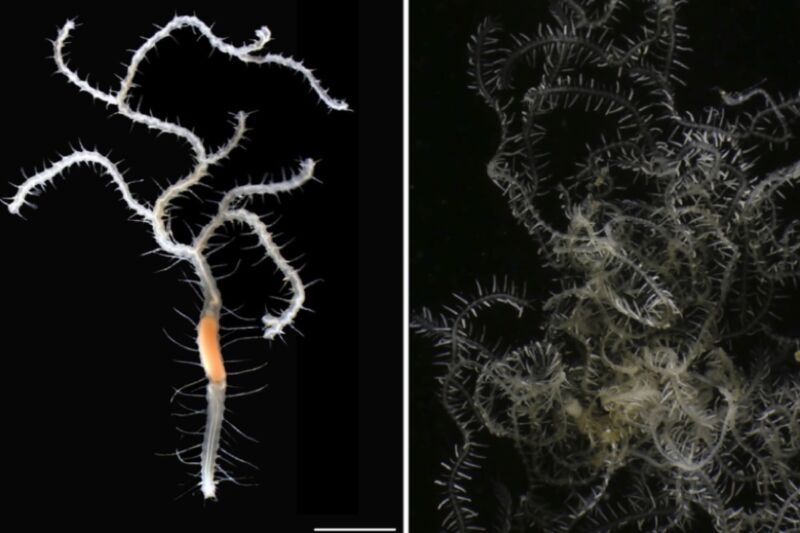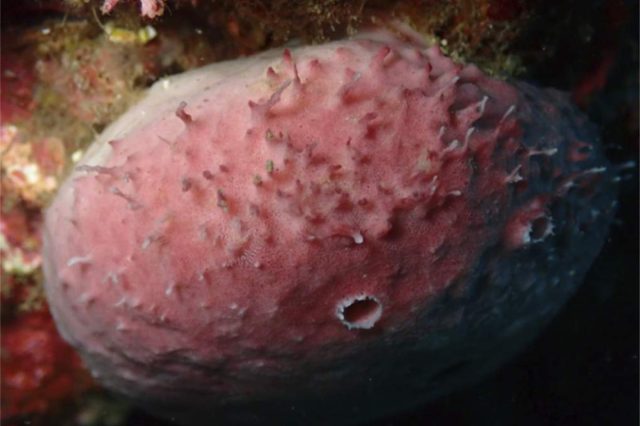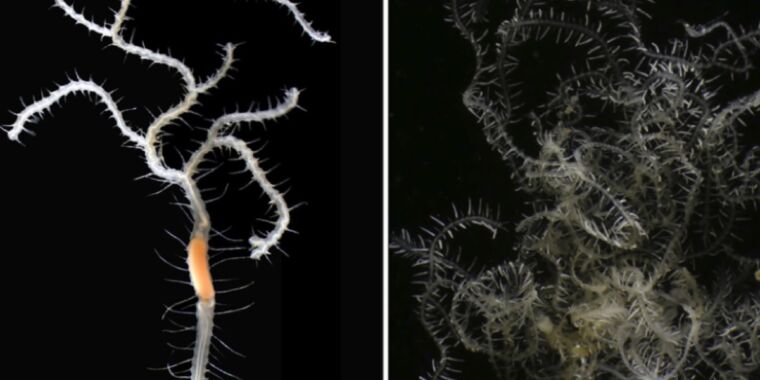
M.T. Aguado
In the 2019 blockbuster film, Godzilla: King of the Monsters, everyone’s favorite kaiju, Godzilla, battled another titan named King Ghidorah, a monster notable for its three heads. Now biologists have discovered a new species of marine worm that has one head but a body that can branch out into several posterior ends, according to a recent paper published in the journal Organisms Diversity & Evolution. So naturally the biologists named the new species after Godzilla’s legendary adversary: Ramisyllis kingghidorahi.
“King Ghidorah is a branching fictitious animal that can regenerate its lost ends, so we thought this was an appropriate name for the new species of branching worm,” said co-author M. Teresa Aguado of the University of Göttingen. In fact, the director of the first Ghidorah-centric feature film in 1964, Ishiro Honda, said his monster was a modern take on a legendary eight-headed and eight-tailed dragon/serpent in Japanese folklore called Yamata no Orochi.
According to Aguado and her co-authors, only two other species of these rare branching worms have been discovered. Back in 1879, an amateur naturalist named Charles Macintosh reported the discovery of a “remarkably branched Syllid” (dubbed Syllis ramosa). The creature was found lurking inside a glass sea sponge in the Philippines during the Challenger natural history expedition. Syllis ramosa was the first known instance of an annelid species with a “randomly branching asymmetrical body.”
The second species of branching marine worm (Ramisyllis multicaudata) wasn’t found until 2012, observed in the coastal shallows of Darwin, Northern Australia. Like Syllis ramosa, the second species also had a randomly branching asymmetrical body and lived inside the labyrinthine canals of sea sponges. And both reproduce asexually through a process called schizogamy. The worms form posterior segments with buds (or gametes) which can develop features like eyes and sensory organs. Once formed, the gametes can detach and swim freely, and the posterior ends can regenerate.

Toru Miura
This new third species was discovered at Shukunegi Point on Sado Island in Japan, also inhabiting sponges. The Japanese team sent images of the worms to Aguado, who instantly recognized the worms’ novelty and organized a 2019 expedition to the island to gather samples and study the creatures in greater detail.
“We were astonished to find another of these bizarre creatures with only one head and a body formed from multiple branching,” said Aguado. “The first worm was thought to be unique. This discovery reveals a higher diversity of these tree-like animals than anyone expected.”
Aguado and her co-authors combined their interdisciplinary expertise to learn more about the new species. Their investigation included molecular analysis that revealed Ramisyllis multicaudata and Ramisyllis kingghidorahi share a common evolutionary ancestor. But there are still some genetic divergences, particularly regarding the shape of certain body segments.
The authors suggest that both species may have inherited the distinctive long asymmetrical body from their last common ancestor. which had adapted to survive inside the branching canals of a sponge. “The ramified bodies of the branching syllids might mirror the intricate labyrinth of the sponge canal system, with the ability to produce new fully developed segments allowing the worm to explore the canals,” the authors wrote.
Plenty of mysteries remain about these rare species of branching worms, which will be the focus of future research. “Scientists don’t yet understand the nature of the relationship between the branching worm and its host sponge: is it a symbiotic relationship where both creatures somehow benefit?” said Aguado. “And how do the worms manage to feed to maintain their huge bodies having just one tiny mouth in their single head?”
DOI: Organisms Diversity & Evolution, 2022. 10.1007/s13127-021-00538-4 (About DOIs).








